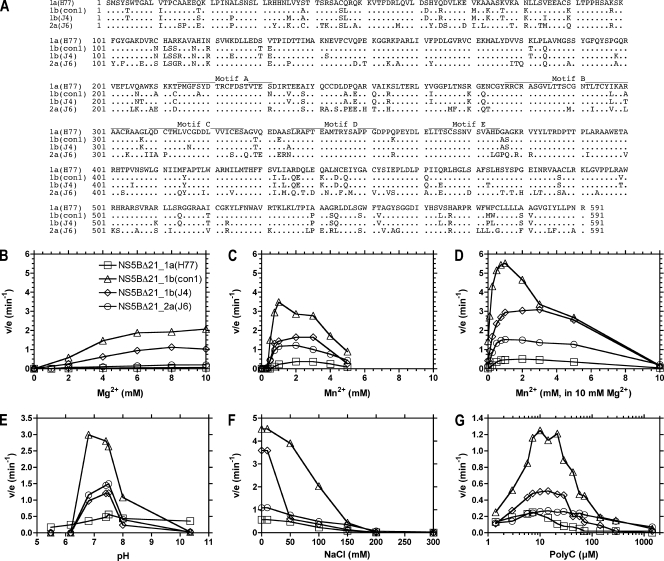FIG. 1.
(A) Alignment of the NS5B amino acid sequences from the 1a(H77), 1b(con1), 1b(J4), and 2a(J6) strains used in this study. RNA-dependent RNA polymerase motifs A through E are indicated (29). (B to G) Characterization of conditions for optimal RNA synthesis by the four NS5BΔ21 polymerases. The ability of each polymerase to synthesize poly(G) from [α-32P]GTP using poly(C) template was assessed as specific activity (v/e), where v is nmoles RNA/min and e is nmoles of enzyme. To test metal ion requirements, NS5B reactions were titrated with MgCl2 (B), MnCl2 (C), and MnCl2 (D) in the presence of 10 mM MgCl2. The effects of pH (E), salt concentration (F), and template concentration (G) were also determined. All reaction mixtures contained 500 μM GTP. The reaction mixtures in panel E contained various buffers at a concentration of 50 mM and at their respective pKas: citric acid (5.4), MES (morpholineethanesulfonic acid) (6.15), PIPES [piperazine-N,N′-bis(2-ethanesulfonic acid)] (6.8), MOPS (morpholinepropanesulfonic acid) (7.2), HEPES (7.5), Tris (8.1), and CAPS (N-cyclohexyl-3-aminopropanesulfonic acid) (10.4). The reactions in panel F were carried out in the absence of MnCl2. All other assay conditions were as described in Materials and Methods.

